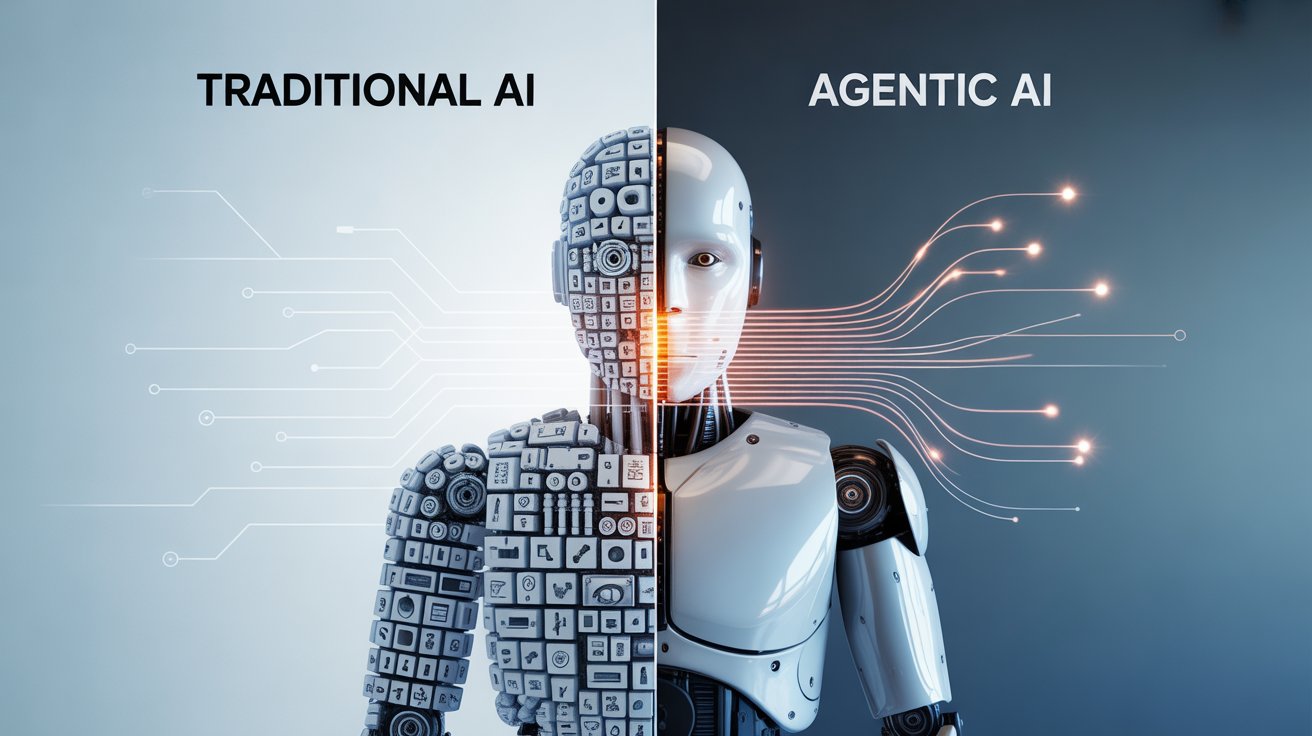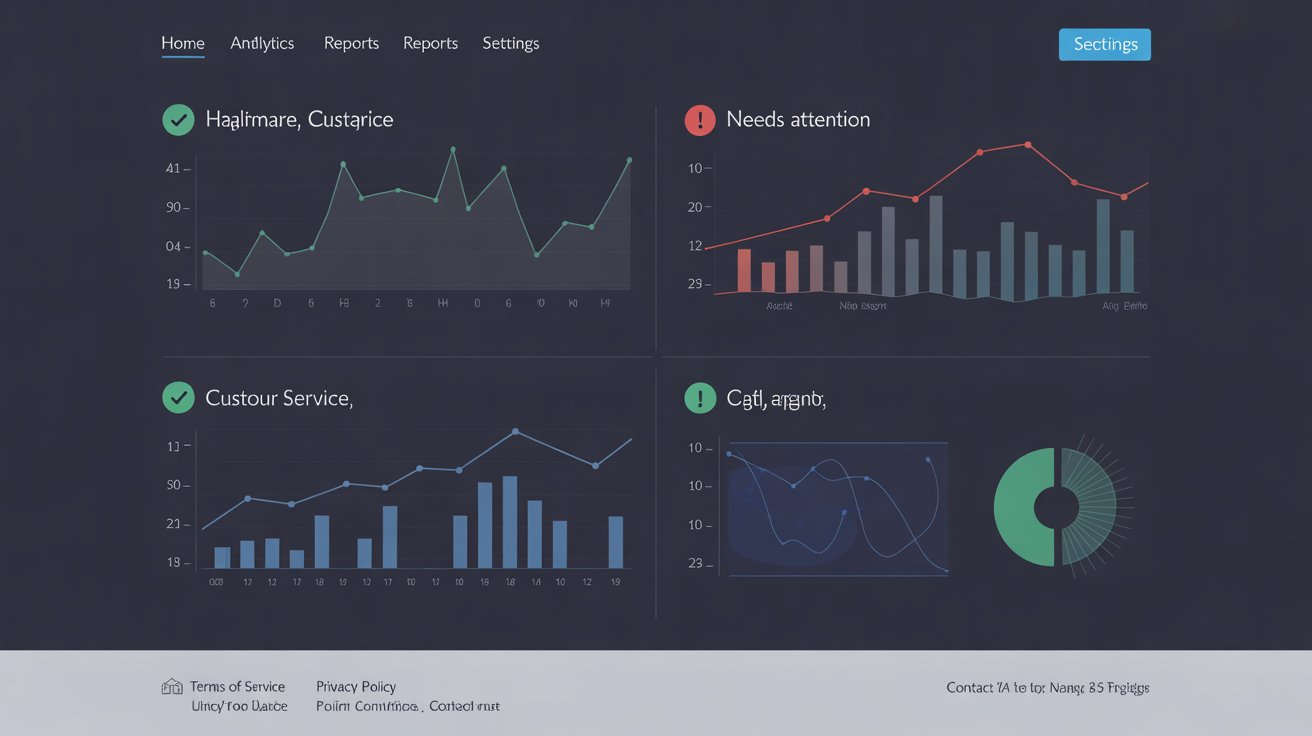The artificial intelligence landscape is undergoing its most significant transformation yet. While we’ve grown accustomed to AI assistants that respond to our prompts, a new breed of intelligent systems is emerging that can think, plan, and act independently. Agentic AI represents this evolutionary leap—autonomous systems capable of pursuing complex goals with minimal human oversight.
With AI agents projected to generate up to $450 billion in economic value by 2028 and 29% of organizations already implementing some form of agentic technology, understanding this paradigm shift isn’t just beneficial—it’s essential for staying competitive in today’s rapidly evolving business environment.
What is Agentic AI?
Agentic AI refers to artificial intelligence systems that can autonomously make decisions, take actions, and pursue complex goals with limited human supervision. Unlike traditional AI models that operate within predefined constraints and require explicit instructions, agentic AI exhibits agency—the capacity to act independently and purposefully toward achieving specific objectives.
The term “agentic” comes from the concept of agency in cognitive science, describing an entity’s ability to act intentionally in its environment. These systems don’t just process information and generate responses; they actively perceive their surroundings, make strategic decisions, and execute multi-step plans to accomplish their goals.
Understanding the “Agentic” Definition
At its core, “agentic” means possessing agency—the ability to act with purpose and autonomy. In the context of AI, this translates to systems that can:
-
Set their own sub-goals within a larger objective framework
-
Adapt their strategies based on changing conditions
-
Learn from experiences to improve future performance
-
Coordinate with other systems and tools to achieve outcomes
-
Make independent decisions without waiting for human input
How Agentic AI Differs from Traditional AI

The distinction between agentic and traditional AI represents a fundamental shift in how artificial intelligence operates and interacts with the world.
Traditional AI: Reactive and Rule-Based
Traditional AI systems function as sophisticated reactive tools. They excel at specific, well-defined tasks but operate within rigid frameworks:
-
Follows predefined rules: Traditional systems require explicit programming for each scenario
-
Reactive responses: They wait for human input before taking any action
-
Limited adaptability: Require retraining or reprogramming to handle new situations
-
Task-specific: Designed for narrow domains like data analysis or pattern recognition
Agentic AI: Autonomous and Adaptive
Agentic AI systems operate with fundamentally different principles:
-
Autonomous decision-making: Can analyze situations and make independent choices without constant human oversight
-
Proactive behavior: Anticipates needs and takes initiative rather than merely responding
-
Dynamic adaptation: Continuously learns and adjusts strategies based on real-time feedback
-
Goal-driven actions: Works toward specific objectives through multi-step planning and execution
Think of traditional AI as a highly skilled GPS that calculates the best route based on existing data. Agentic AI is more like a seasoned personal driver who not only knows the route but monitors traffic conditions, remembers your preferences, notices you’re running late, and proactively suggests alternatives while updating relevant parties.
Core Characteristics of Agentic AI
Agentic AI systems are distinguished by several key capabilities that enable their autonomous operation:
Autonomous Decision-Making

Unlike traditional systems that require constant human input, agentic AI can evaluate complex situations and make independent decisions. These systems analyze available data, assess multiple options, and choose the most appropriate course of action based on their programmed objectives and learned experiences.
Goal-Driven Behavior
Agentic AI doesn’t just complete isolated tasks—it works toward specific, high-level objectives. The system can break down complex goals into manageable subtasks, prioritize actions, and maintain focus on the ultimate outcome even when circumstances change.
Learning and Adaptation
These systems continuously improve their performance through experience. Unlike static algorithms, agentic AI learns from each interaction, refines its decision-making processes, and adapts to new situations without requiring manual updates.
Advanced Reasoning
Agentic AI can connect information across multiple domains and make logical inferences. This enables the systems to handle complex, multi-faceted problems that require understanding context, relationships, and implications.
Tool Integration and API Connectivity
Modern agentic systems can interact with external tools, databases, and APIs to gather information and execute actions. This connectivity allows them to operate across different platforms and systems seamlessly.
Memory and Context Retention
Unlike traditional chatbots that treat each interaction as isolated, agentic AI maintains both short-term and long-term memory. This enables them to reference previous interactions, build on past experiences, and maintain continuity across extended workflows.
Real-World Applications of Agentic AI
The practical applications of agentic AI span virtually every industry, with implementations already showing remarkable results.
Customer Service Revolution
Gartner predicts that agentic AI will resolve 80% of common customer service issues without human intervention by 2029. Unlike traditional chatbots that follow scripts, agentic customer service systems can:
-
Access and analyze real-time shipping data to determine delay causes
-
Offer solutions like expedited replacements or partial refunds
-
Update customer records and execute chosen resolutions independently
-
Learn from each interaction to improve future responses
Healthcare Transformation

In healthcare settings, agentic AI systems are revolutionizing patient care through:
-
Personalized treatment recommendations based on continuous analysis of patient data
-
Real-time monitoring of vital signs with automatic alerts for concerning changes
-
Diagnostic assistance that integrates symptoms, medical history, and latest research
-
Administrative automation for appointment scheduling and claims processing
Cybersecurity and Threat Response
Agentic AI has become particularly valuable in cybersecurity, where real-time response is critical:
-
Autonomous threat detection through continuous network monitoring
-
Adaptive response strategies that evolve with new attack patterns
-
Proactive threat hunting across identity, network, and cloud logs
-
Automated incident response including system isolation and countermeasures
Financial Services Innovation
The finance sector leverages agentic AI for:
-
Automated risk assessment with real-time market analysis
-
Fraud detection through pattern recognition and behavioral analysis
-
Investment strategy optimization based on continuous market monitoring
-
Regulatory compliance monitoring and reporting
Supply Chain Optimization
Agentic systems transform supply chain management by:
-
Demand forecasting using multiple data sources and market indicators
-
Inventory optimization with automatic reordering and supplier coordination
-
Disruption prediction and proactive mitigation strategies
-
End-to-end visibility across complex supply networks
Understanding Agentic Workflows
Agentic workflows represent AI-driven processes where autonomous agents make decisions, take actions, and coordinate tasks with minimal human intervention. These workflows leverage core components like reasoning, planning, and tool use to execute complex business processes efficiently.
How Agentic Workflows Operate
Traditional automation follows static decision trees, but agentic workflows are dynamic and adaptive. They approach complex problems through:
-
Multi-step iterative processes that can adjust based on intermediate results
-
Real-time adaptation to unexpected conditions or data changes
-
Autonomous task breakdown into manageable subtasks
-
Coordination between multiple agents for complex workflows
Key Components of Agentic Workflows
Multiagent Collaboration: Different agents can specialize in specific domains, sharing learned information rather than each agent learning everything independently.
System Integrations: Workflows integrate with existing infrastructure through data consolidation, agent frameworks like LangChain and CrewAI, and context-specific tools.
Continuous Optimization: Systems continuously analyze performance and refine their approaches without requiring human intervention.
Agentic RAG: Enhanced Information Retrieval
Agentic RAG (Retrieval-Augmented Generation) combines the autonomous decision-making capabilities of agentic AI with RAG’s ability to access dynamic, real-time data. This represents a significant advancement over traditional RAG systems.
Traditional RAG vs. Agentic RAG
Traditional RAG systems operate reactively, requiring explicit queries and following predetermined paths. They’re limited to single data sources and can’t adapt to changing contexts.
Agentic RAG systems are proactive and autonomous:
-
Autonomous decision-making: Identifies needed information without explicit instructions
-
Dynamic retrieval: Accesses multiple real-time data sources simultaneously
-
Contextual integration: Combines external information with internal knowledge
-
Continuous improvement: Incorporates feedback to enhance future performance
Agentic RAG Applications
Organizations use agentic RAG for:
-
Multi-source research requiring information from diverse databases
-
Real-time decision support needing current market or operational data
-
Complex query resolution involving multiple steps and data types
-
Adaptive content generation that adjusts based on user context and preferences
Benefits of Implementing Agentic AI
The advantages of agentic AI implementation extend far beyond simple automation, offering transformative benefits for organizations ready to embrace autonomous intelligence.
Operational Efficiency Gains
Organizations implementing agentic AI report 3-5x improvements in process completion times for complex workflows. Tasks that previously required multiple handoffs between departments now happen automatically, with 26% of enterprises seeing increased operational efficiency as their primary ROI driver.
Significant Cost Reduction
Gartner predicts agentic AI will lead to 30% reduction in operational costs by 2029. These savings come from:
-
Reduced manual labor requirements for routine tasks
-
Decreased error rates leading to fewer costly corrections
-
24/7 operation without additional staffing costs
-
Scalable processing that handles increased workloads without proportional cost increases
Enhanced Decision-Making Capabilities
Agentic AI provides real-time analysis of vast data volumes, enabling faster and more informed business decisions. These systems can:
-
Identify trends and patterns that humans might miss
-
Process multiple data sources simultaneously for comprehensive insights
-
Provide predictive analytics for proactive planning
-
Offer contextual recommendations based on current conditions
Improved Customer Experience
Customer satisfaction increases significantly with agentic AI implementation due to:
-
Faster response times with issues resolved in minutes rather than hours
-
Personalized interactions based on customer history and preferences
-
Proactive service that anticipates and addresses issues before they escalate
-
Consistent quality regardless of time or volume
Scalability and Adaptability
Agentic AI systems scale efficiently with business growth:
-
Handling increased workloads without proportional resource investment
-
Adapting to new scenarios through continuous learning
-
Integrating with existing systems without major infrastructure overhauls
-
Supporting business agility through rapid process adaptation
Challenges and Limitations
Despite its tremendous potential, agentic AI implementation faces several significant challenges that organizations must address.
Technical Complexity and Infrastructure Requirements
Implementing agentic AI demands substantial computational resources and specialized infrastructure. Organizations need:
-
High-performance computing including GPUs and TPUs for model execution
-
Scalable cloud services with auto-scaling capabilities
-
Vector databases alongside traditional databases for complex data handling
-
Specialized expertise for system design and maintenance
Data Security and Compliance
Agentic AI’s autonomous access to multiple systems creates significant security challenges. Key concerns include:
-
Unauthorized access to sensitive data through agent pathways
-
Data privacy compliance in regulated industries
-
Audit trails for autonomous decision-making processes
-
Governance frameworks to ensure appropriate AI behavior
Transparency and Explainability
The “black box” nature of complex agentic systems makes it difficult to understand decision-making processes. This creates challenges for:
-
Regulatory compliance requiring explainable AI decisions
-
Trust building with users and stakeholders
-
Error diagnosis when systems make incorrect choices
-
Accountability for autonomous actions
Limited Emotional Intelligence
Agentic AI lacks emotional intelligence, which is crucial for roles requiring empathy and nuanced human understanding. This limitation affects:
-
Customer service scenarios requiring emotional support
-
Healthcare interactions needing compassionate communication
-
Management decisions involving human factors
-
Creative collaboration requiring emotional insight
Risk of Unintended Consequences
The autonomous nature of agentic AI introduces risks of unexpected behaviors:
-
Unintended actions that could harm business operations
-
Compounding errors in complex multi-step processes
-
Systemic risks when multiple agents interact unexpectedly
-
Ethical violations without proper guardrails
Skills Gap and Implementation Challenges
80% of AI projects fail, with nearly half of leaders identifying skills gaps as a significant barrier. Organizations struggle with:
-
Technical expertise shortage for agentic AI development
-
Change management for workforce adaptation
-
Integration complexity with existing systems
-
Cost escalation during implementation phases
Leading Agentic AI Frameworks and Tools
The development of agentic AI systems is supported by several powerful frameworks, each offering unique capabilities for different use cases.
LangGraph: Multi-Agent Coordination
LangGraph stands out for building complex multi-agent systems. Its key features include:
-
Explicit multi-agent coordination with individual nodes for different agents
-
Stateful workflows that maintain context across interactions
-
API and tool integration for comprehensive automation
-
Suitable for RAG and custom pipeline development
However, LangGraph has a steep learning curve and can be challenging to debug.
CrewAI: High-Level Abstraction
CrewAI offers simplified agent system development through high-level abstractions:
-
Role-based agent collaboration (Researcher, Writer, Analyst)
-
Simplified multi-agent orchestration for common workflows
-
Built-in task delegation and coordination mechanisms
-
Ideal for content creation and business process automation
AutoGen: Collaborative Multi-Agent Systems
AutoGen enables free-form agent collaboration through structured message passing:
-
Asynchronous agent communication for complex workflows
-
Experimental and research-friendly architecture
-
Flexible agent role definitions and interaction patterns
-
Strong for prototyping and iterative development
OpenAI Swarm and Microsoft Semantic Kernel
These enterprise-focused frameworks provide:
-
Enterprise integration capabilities for existing Microsoft ecosystems
-
Robust security and compliance features
-
Scalable deployment options for large organizations
-
Professional support and documentation
Key Framework Features
Most agentic frameworks share common capabilities:
-
Model-agnostic support for multiple LLM providers
-
Tool integration for external API connectivity
-
Memory management for context retention
-
RAG integration for knowledge retrieval
-
Structured output handling for reliable data processing
Implementation Guide: Getting Started with Agentic AI
Successfully implementing agentic AI requires a strategic, phased approach that addresses both technical and organizational considerations.
Phase 1: Requirements Analysis and Planning
Thorough planning is essential for agentic AI success. Organizations should:
-
Define specific objectives the AI system must achieve
-
Assess the operating environment including data sources and integration points
-
Identify constraints such as regulatory requirements and security needs
-
Engage stakeholders to understand user needs and business requirements
Phase 2: Architecture Design
Agentic AI architecture must support modularity, scalability, and robustness. Key design considerations include:
-
Layered architecture with perception, decision-making, learning, and action layers
-
Communication protocols for agent interaction and coordination
-
Data flow management and fault tolerance mechanisms
-
Security and compliance integration from the ground up
Phase 3: Development Environment Setup
Establishing an efficient development environment accelerates implementation:
-
Programming language selection (Python remains popular for its AI libraries)
-
Framework selection based on specific use case requirements
-
Version control systems for collaborative development
-
CI/CD pipeline configuration for automated testing and deployment
Phase 4: Core Development and Testing
Iterative development cycles ensure robust system performance:
-
Algorithm selection appropriate for the specific use case
-
Model training with diverse datasets or simulated environments
-
Comprehensive testing including unit, integration, and system-level validation
-
Performance evaluation with relevant metrics for both accuracy and ethical considerations
Phase 5: Integration and Deployment
Successful integration requires careful coordination with existing systems:
-
API and database integration with enterprise systems
-
Security protocol implementation and access control
-
Change management for user training and process updates
-
Monitoring and maintenance procedures for ongoing operation
Future of Agentic AI Development
The trajectory of agentic AI points toward increasingly sophisticated and capable autonomous systems that will fundamentally reshape how work gets done.
Market Growth and Adoption Projections
The agentic AI market is experiencing explosive growth:
-
$10.41 billion market size projected for 2025 with 56.1% compound annual growth rate
-
70% of organizations expected to operationalize autonomous AI by 2025
-
15% of day-to-day work decisions will be made autonomously by 2028
-
One billion AI agents operational globally by 2026 according to IBM and Salesforce projections
Technological Advancements on the Horizon
Key developments shaping the future include:
-
Enhanced reasoning capabilities through improved language models
-
Better interoperability between different agent systems
-
Large Action Models (LAMs) specifically designed for autonomous task execution
-
Improved human-AI collaboration interfaces and protocols
Industry-Specific Evolution
Vertical-specific agentic solutions are emerging across industries:
-
Healthcare agents specialized in patient care and medical decision-making
-
Financial agents for risk management and trading automation
-
Manufacturing agents for production optimization and quality control
-
Legal agents for contract analysis and compliance monitoring
Challenges and Realistic Expectations
Despite the hype, significant challenges remain:
-
40% of agentic AI projects may be canceled by 2027 due to costs and unclear business value
-
Technical maturity gaps in current autonomous capabilities
-
Need for better governance frameworks and risk management
-
Requirement for human oversight in critical decision-making scenarios
The Path Forward
Success in agentic AI requires:
-
Collaboration between academia and industry for theoretical and practical advancement
-
Focus on clear business value rather than technology for its own sake
-
Gradual implementation starting with well-defined use cases
-
Investment in data quality and governance as the foundation for AI success
Key Takeaways for Business Leaders
As agentic AI transitions from experimental technology to business reality, leaders must understand both its transformative potential and implementation requirements.
Agentic AI represents a fundamental shift from reactive AI tools to proactive, autonomous systems capable of independent decision-making and goal achievement. Unlike traditional AI that requires constant human input, these systems can perceive their environment, plan multi-step workflows, and adapt to changing conditions while pursuing specific objectives.
The business impact is already measurable, with organizations reporting 3-5x improvements in process completion times and predictions of 30% operational cost reductions. Industries from customer service to cybersecurity are seeing tangible benefits from autonomous agents that operate 24/7 without human supervision.
Implementation success requires careful planning and realistic expectations. While the technology shows enormous promise, 40% of projects may fail due to underestimating complexity, costs, or business value. Organizations must focus on clear use cases, invest in proper data infrastructure, and maintain appropriate human oversight.
The future belongs to organizations that act strategically rather than reactively. With 70% of organizations expected to deploy autonomous AI by 2025 and the market growing at 56.1% annually, early movers who implement thoughtfully will gain significant competitive advantages.
The age of agentic AI has arrived, but success depends on understanding both its capabilities and limitations while building the technical and organizational foundations necessary for autonomous intelligence to thrive.